Pros
Cons
Introduction
Front
{{section_header}}{{section.name}}{{/section_header}}
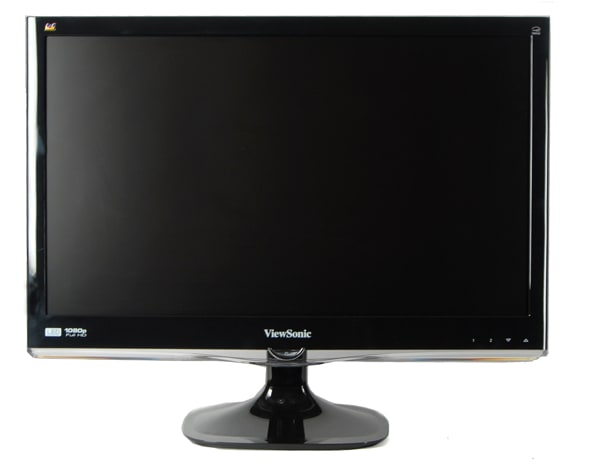
Back
{{section_header}}{{section.name}}{{/section_header}}

Sides
{{section_header}}{{section.name}}{{/section_header}}
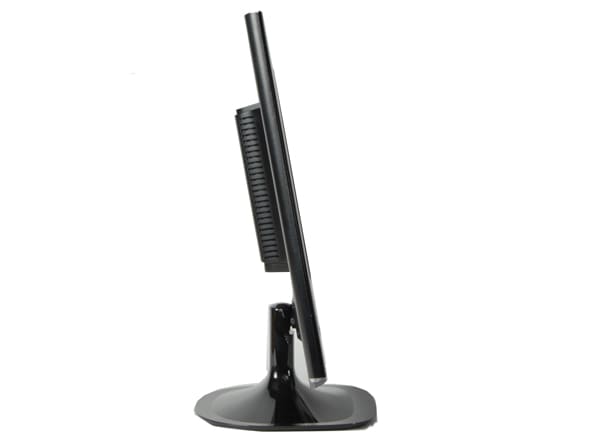
Size Comparisons
{{section_header}}{{section.name}}{{/section_header}}
In the Box
{{section_header}}{{section.name}}{{/section_header}}
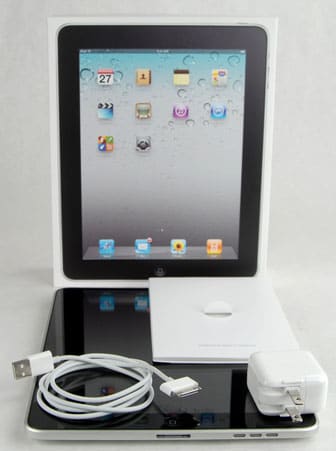
The {{product.name}} comes packaged with a USB cable, an AC to USB converter, and the eReader itself.
Handling
{{section_header}}{{section.name}}{{/section_header}}
The {{product.model}} handles very naturally, as it sits in your hands without much weight to it, and the edges are contoured nicely. Because the unit is controlled by touch on the screen, the ability to grip the eReader easily with one hand is a big plus, especially if you're going to be reading for extended periods of time.
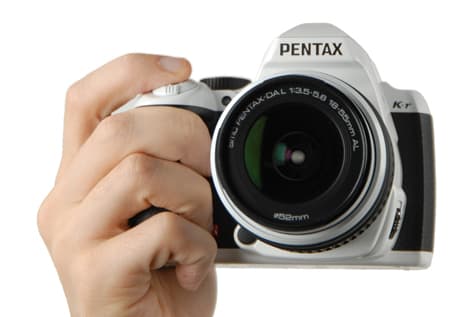
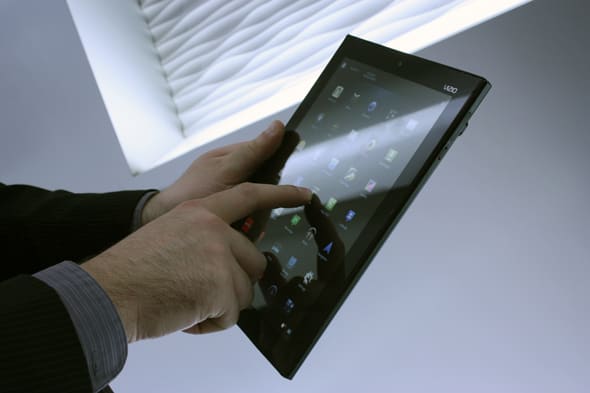
Screen
{{section_header}}{{section.name}}{{/section_header}}
The screen of the {{product.model}} is the very same eInk Pearl screen that we have come to know and love in the Amazon Kindle, Borders Kobo eReader and its successor. So what sets it apart? The touch screen. In our opinion, the touchscreen is a great addition to the already-great reading experience offered by the eInk-screened eReaders, as it allows for more intuitive control of your reader.
In addition to the touchscreen, the eInk display carries its own advantages as well, like minimizing reflections, being easier to read in a very broad range of lighting conditions, and displaying a very natural-looking picture that looks like it was printed on a piece of paper. The {{product.model}}'s screen also does a good job in minimizing the "dip-to-black" effect whenever you turn a page, as it only appears every few pages turned, rather than inverting your page every single time you do something with it.

Indoor & Outdoor Use
{{section_header}}{{section.name}}{{/section_header}}
As you can see from the light level images below, the {{product.model}} provides a nicely-legible and clear picture in a broad range of lighting conditions, and generally handles changes in lighting much better than its LCD-screened brethren, as their pictures become far more difficult to read in bright light.
Controls
{{section_header}}{{section.name}}{{/section_header}}
As previously mentioned, the {{product.model}} is mainly operated using touch controls. To turn a page, you can swipe or tap your finger in the direction you would like to go, and if you hold your finger down (gently), you can look up words in the dictionary or copy them for future reference.
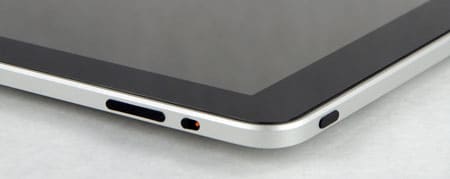
The controls on the top right side of the iPad body: volume, lock and power.
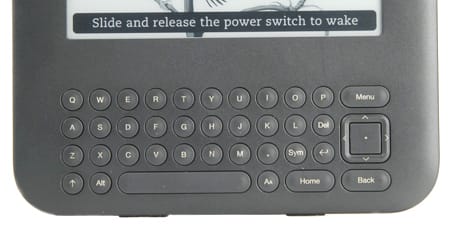
There are also cleverly hidden buttons on the sides of the unit that can be used to turn pages. Still, it's probably a little bit more fun to just swipe through pages using the touchscreen, but it's good to know that there are manual controls should something go wrong with the unit.
Connectivity
{{section_header}}{{section.name}}{{/section_header}}
There isn't a whole lot in the way of open ports and connectivity options, but for a simple eReader, how much do you really need? The internal wireless card is great, and should you need to port things from your computer, there is a microUSB port on the bottom of the unit and there is also a microSD/SDHC card slot on the right side of the unit.
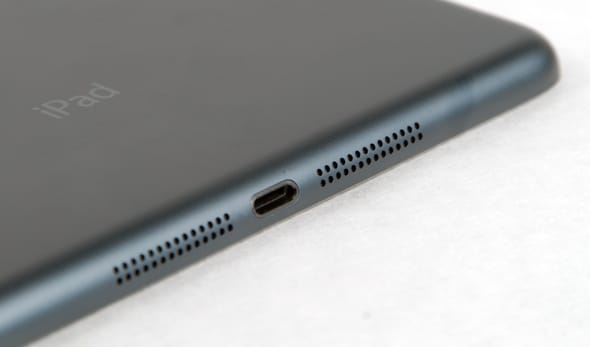
Here we see a Lightning dock in its natural habitat.
Battery Life
{{section_header}}{{section.name}}{{/section_header}}
Given that Barnes & Noble made some outrageous claims about their new {{product.model}}, you can bet that we were eager to put those claims to the test. We regret to inform you that these claims (like most) were more or less nothing more than marketing hype, but that doesn't take away from the performance of the {{product.model}}; its battery is great.
In our tests, we turned the wireless off and had our disembodied-finger simulator "read" an eBook for 24 hours straight, leaving the unit with 90% of its battery charge after 24 hours of straight eBook reading. While it's not the 2 months that B&N claimed, the {{product.model}} lasting a projected 10 days, 10 hours is still very good for an eReader. We're not fans of marketing hyperbole, but we are definitely willing to give credit where credit is due: the {{product.model}} has good battery life.
Reading Books
{{section_header}}{{section.name}}{{/section_header}}
Reading books on the {{product.model}} is a great experience, as the latest generation of eReaders with eInk screens have seemed to eschew physical controls in favor of a touch screen. We find that it feels a bit more natural to swipe our finger across the screen than to mash buttons on the side of the unit. If you absolutely need buttons, the raised parts of the rubber bezel are actually physical controls that you can use to turn pages if you choose, but we believe you'll probably stick to the touch screen, especially if you're used to reading eBooks on an iPad or iPod touch.
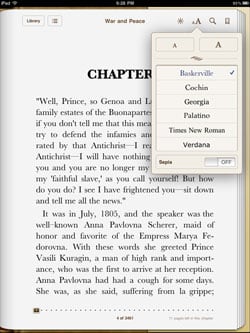
The iBooks program offers a range of controls for font and text size
One of the claims Barnes & Noble gave us in their press release earlier in June was actually correct, as the "dip to black" effect was greatly minimized when turning pages. It did show up every once and a while, but even then it was greatly shortened. Kudos, Barnes & Noble!
Buying Books
{{section_header}}{{section.name}}{{/section_header}}
The online eBook store for the {{product.model}} is fairly extensive and easy to use. It is a bit slow to search for items, but the touch screen keyboard allows for easy browsing and you won't have to worry about being limited to a small set of bad controls.
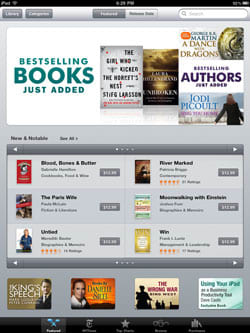
Books can be purchased on the iPad through the iTunes store
eBook Formats
{{section_header}}{{section.name}}{{/section_header}}
Because of the {{product.model}}'s marriage to the Barnes & Noble eBook store, you will find it a bit difficult to get the books you want on your eReader if they aren't in the store. You can always use the Calibre software to convert your other files, but this can be slow-going.
{{product.manufacturer_specs['eBook Formats Image']}}
If you would like to transfer files from your computer, you must make sure that they are .pdf, .txt, .epub, or the Barnes & Noble proprietary format.
Newspapers & Magazines
{{section_header}}{{section.name}}{{/section_header}}
Once you've set up your Nook account with Barnes & Noble, you can browse the newsstand, which is home to the eBook versions of about 80 newspaper and magazine titles.
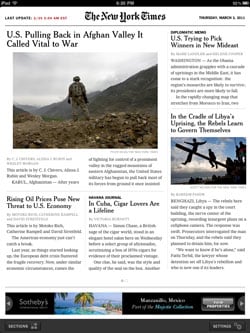
The New York Times is available on the iPad through their own app
eBook Battery Life
{{section_header}}{{section.name}}{{/section_header}}
{{product.manufacturer_specs['eBook Battery Life Image']}}
Device & Specs
{{section_header}}{{section.name}}{{/section_header}}
Both devices are well-equipped to deal with the task at hand when it comes to reading eBooks, but each has their advantages over the other: the Kindle can browse the internet and is connected to the web wherever you go via an agreement with AT&T for free 3G. On the other hand, the {{product.model}} has increased processing power and a touchscreen. The only drawback to the {{product.model}} is that it does not have the QWERTY keyboard that the Kindle does, which can make searching for books a pain.
Screen
{{section_header}}{{section.name}}{{/section_header}}
Both screens are virtually identical in every regard; they are similarly reflective, they have roughly the same DPI (give or take a pixel or two) and they are the same size. Where the {{product.model}} holds an advantage is its touchscreen, which makes for a great user interface.
Battery
{{section_header}}{{section.name}}{{/section_header}}
Both the Kindle and the {{product.model}} have outstanding battery life, but the Kindle will last 11 days where the {{product.model}} will last 10 days of continuous eBook reading. Splitting hairs, we know, but it's still worth knowing what has the better battery.
eReader
{{section_header}}{{section.name}}{{/section_header}}
Both the Kindle and the {{product.model}} offer a great experience reading eBooks, as they are very similar units. However, the touchscreen of the {{product.model}} allows for a more natural eBook reading experience with its gestures and increased processing speed minimizes the annoying screen inversion every time you turn a page.
Internet
{{section_header}}{{section.name}}{{/section_header}}
It's hard to compare the {{product.model}}'s internet features against the Kindle's because, well, it has none! Outside of its eBook store, you can't browse the internet like the Kindle (however rudimentary and primitive it may be), you can't check email (again in the primitive browser), and you can't download even the hilariously basic apps available to Kindle owners. Still, if you read the review of the Kindle, you'll know that this really isn't much of a plus at all.
Device & Specs
{{section_header}}{{section.name}}{{/section_header}}
Despite sharing a similar model name, each of these devices are very different animals. Though they both have touchscreen elements, the Nook Color and {{product.model}} differ in just about every other measure. They both have different screen technologies, different processing power and different capabilities. The Color can play back music, video and streaming internet content, where the {{product.model}} cannot in any capacity. At over double the cost of the {{product.model}}, we'd recommend it if you want to have a budget media tablet and avoid a horrific tablet experience.
Screen
{{section_header}}{{section.name}}{{/section_header}}
The Color has a bigger, LCD screen with a higher resolution (but lower DPI), while the {{product.model}} has a smaller eInk display with a smaller resolution but higher DPI. This comparison is very apples and oranges here, as each device is looking to perform a different range of tasks. Still, if you're only interested in reading eBooks, you can bet that the {{product.model}} is the closest thing you'll get to reading an actual printed page.
Battery
{{section_header}}{{section.name}}{{/section_header}}
Another apples and oranges comparison, the {{product.model}} can last over 10 consecutive days of reading eBooks, where the Nook Color will last only seven or eight hours, and less if you play back audio or video. This is due to the LCD screen requiring a strong backlight to be seen, which draws significantly more power than an eInk display.
eReader
{{section_header}}{{section.name}}{{/section_header}}
As a pure eReader, it's tough to beat the {{product.model}}, and the Nook Color certainly doesn't. The battery life is shorter, the controls are a little less easy and the screen doesn't allow it to be taken in as wide a range of lighting environments as the {{product.model}}. If you are looking for an eReader and nothing else, the {{product.model}} will beat the Nook Color any day of the week.
Internet
{{section_header}}{{section.name}}{{/section_header}}
Where the Nook Color outshines the {{product.model}} is in its internet support and applications. You can stream music, video and even browse the web with it. Still, it's somewhat rudimentary, but it's nowhere near as bad as the Kindle's browser.
Device & Specs
{{section_header}}{{section.name}}{{/section_header}}
Despite a new Kobo being on the market already, it's worthy of note that Barnes & Noble seems to have designed its new {{product.model}} to compete with the new Kobo, as they're essentially the same machine. The Kobo's previous iteration has a slightly smaller screen, clunkier controls and a slower processor, which makes the {{product.model}} a better buy at only slightly higher cost.
Screen
{{section_header}}{{section.name}}{{/section_header}}
Despite the fact that both have very similar screen technology, the edge goes to the {{product.model}} here, as it has a higher DPI and the touch screen gives it a much better user interface than the Kobo Wireless.
Battery
{{section_header}}{{section.name}}{{/section_header}}
Here too, the {{product.model}} outshines the Kobo, as it has double the eReader battery life. Still, we should mention that we're still talking about battery life in terms of several consecutive days with the Kobo, so it's not like you won't get your money's worth out of the battery. It's just that the {{product.model}}'s is better.
eReader
{{section_header}}{{section.name}}{{/section_header}}
Both the Kobo and the {{product.model}} provide a great eReading experience, and they perform beautifully in this regard. However, the touchscreen of the {{product.model}} and the reduced "dip-to-black" effect makes the {{product.model}}'s experience a more natural and less annoying one, so we're giving this one to the {{product.model}}.
Internet
{{section_header}}{{section.name}}{{/section_header}}
Conclusion
Performance
Overall, the {{product.name}} does one thing and does it exceptionally well. If you want an inexpensive eReader for the exclusive purpose of reading eBooks, it's hard to compete with a tablet like the {{product.model}}, as it has a great interface and battery life, and for $139 it's not going to break the bank either. Also nice is the fact that you won't have to put up with the notorious "dip to black" effect present on the first generation eInk readers. Still, if you need your tablet to do just about anything else, like audio or video, this tablet probably isn't for you.
Screen Performance
The screen of the {{product.name}} is nothing special, as the performance of the eInk displays are rather uniform across brands and models, but the new addition of touch interfacing is a great add-on that makes the experience much more enjoyable and easy. You may see eInk readers start to pick this up as a standard feature.
Battery Life
While not the 2 months boasted by Barnes & Noble, the 10-plus day battery life is great for those who are avid readers and don't like to charge their units often. You shouldn't have to worry about losing charge at the worst possible moment should you carefully watch your battery charge.
Ereader:
The improved interface and the highly-detailed eInk screen makes the {{product.model}} a great eReader. Its light, compact design makes it easy to handle, and it's small enough to fit into a purse, messenger bag or backpack without much issue.
Meet the tester
A seasoned writer and professional photographer, Chris reviews cameras, headphones, smartphones, laptops, and lenses. Educated in Political Science and Linguistics, Chris can often be found building a robot army, snowboarding, or getting ink.
Checking our work.
Our team is here to help you buy the best stuff and love what you own. Our writers, editors, and experts obsess over the products we cover to make sure you're confident and satisfied. Have a different opinion about something we recommend? Email us and we'll compare notes.
Shoot us an email